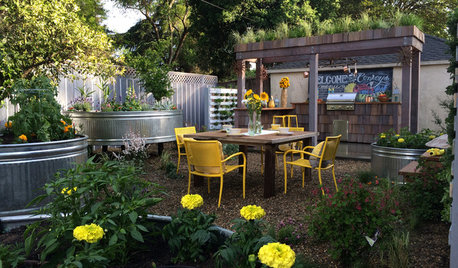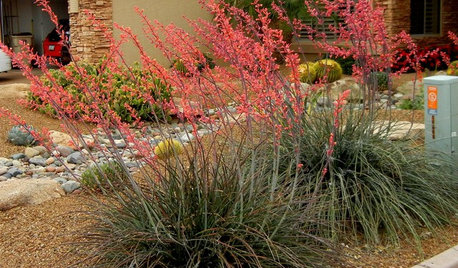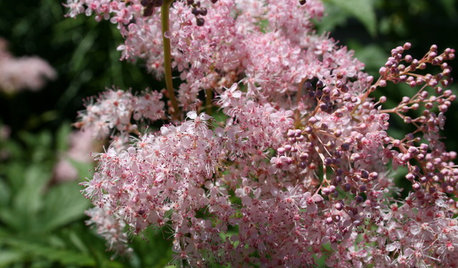Here is an old article on drying sweet corn that I'd forgotten about in my old stash of gardening stuff from the years when my kids were pre-adolescents.
Enjoy! Maybe you've posted other how-to's on sweet corn drying, and if so, I apologize. It looks like a very simple process.
Let me know if you plan to try this in sweet corn season or if you already have done it and what adjustments would be needed. A dehydrator ought to do the trick quite nicely for one thing.
Dried Sweet Corn "Nothing Like It In the Whole World"
From Organic GardeningÂs HARVEST BOOK, copyright 1975
My parents had a way of handling sweet corn when it was ready to be put away. They dried it, as did their families before them among the Pennsylvania Dutch. They didnÂt have many cans in the first place, and certainly no freezers
I remember our storeroom back home in the fall, loaded with dried food of all kinds. But nothing was so tantalizing to me as the smell of the dried sweet corn  nothing like it in the whole world.
For many years my husband and I have been drying our own sweet corn. We simply oven-dry it. Sun-drying would have been out of the question, since the weather here in Oregon that time of year is often cool, cloudy and showery.
When the corn is ready to pick we carefully select, husk and silk it, but do not break off the last bit of stump-end close to the ear. Nor do we break or cut off the tip-end either. The stump is a good hand-hold, and the tips is a good rest when cutting the corn from the cob. A small time-saver there.
From the time it is picked, the rush is on to get is drying before it loses any of its goodness. First it is plunged into a large covered kettle of boiling water for five minutes to set the milk in the kernels, then into cold water to stop the cooking. We start with ice cubes, but all too soon we run out of ice. Real cold water does as well. We use our 7-quart canner, but any large covered kettle will do.
After the corn is cooled enough to handle comfortably, we cut the kernels off the cob, holding the ear upright by the little stump and using a sharp paring knife to cut downward toward the tip-end, being careful not to cut too close to the cob. Then with the back of the knife blade, thoroughly scrape the cob to get out all the milk and kernel hearts.
Up to this point the corn has been prepared the same way as for canning or freezing. After it is all off the cobs, spread out evenly in large enamel trays.
Once the trays are spread to a depth of one to 1 ½ inches, with the oven set at warm, they are slid into the oven and left for two or three nights, or until the corn is thoroughly dried. We let nighttime and the electric range do the work for us and save time.
Corn can be dried on top of the range or in the warming-oven of an old kitchen range. ItÂs stirred three or four times to dry evenly throughout.
All the time there is the most appetizing, hunger-tingling smell all through the house. There are no additives whatsoever and the corn will keep for any length of time.
It makes very little difference whether it is stored in the light or dark. WeÂve tried it both ways, and found no difference in taste or quality. But we do try to maintain an even, cool temperature for all our dried foods.
When the corn is finished and ready to store, you will be surprised how much it has shrunk. It may be a much as half its original bulk. That is fine for storing. Gallon jars hold the equivalent of five dozen ears each, a huge saving of can space. Freezer space, too: think of the amount of space taken by five dozen roasting ears.
I use gallon jars because I have them. Coffee cans would serve as well. Even plastic bags are convenient, and easily stored.
What do we do with it then? How is dried corn eaten? There are few cookbooks today that give many recipes for dried sweet corn.
The early settlers considered it a holiday delicacy. No Thanksgiving dinner was complete without it. In our family the following method was handed down from generation to generation since they homesteaded near Dubuque, Iowa, in the 1850s. Here is the recipe as we use it today:
DRIED SWEET CORN
1 cup dried corn
2 cups cold water.
Soak 2 hours or so. Do not drain.
Add:
½ teaspoon sea-salt
1 tablespoon honey
Pepper to taste
Cover and cook slowly until the kernels are tender (50 to 60 minutes). Correct seasonings. Add butter. Serve in sauce dishes, broth and all. 2 tablespoons milk may be added if you like. Serves 4 to 6.
This is simply the basic recipe for serving dried sweet corn as a vegetable. It can be used in casseroles, omelets, mixed with other vegetables or in salads and even desserts such as puddings. Its nutty flavor is pungent and aromatic. Try it and see.
















mrsrose
laceyvail 6A, WV
Related Professionals
Carson Landscape Architects & Landscape Designers · Lake Oswego Landscape Architects & Landscape Designers · Alamo Landscape Contractors · Bound Brook Landscape Contractors · Concord Landscape Contractors · El Segundo Landscape Contractors · La Verne Landscape Contractors · Lancaster Landscape Contractors · Mastic Beach Landscape Contractors · Bronx Roofing & Gutters · Marietta Roofing & Gutters · Castro Valley Driveway Installation & Maintenance · Charlotte Driveway Installation & Maintenance · Fremont Driveway Installation & Maintenance · South Lyon Driveway Installation & Maintenance